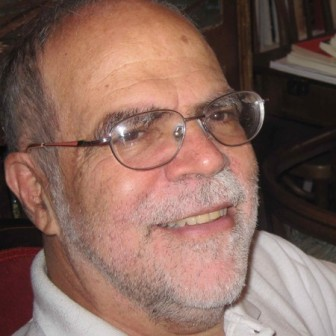Superstripes Physics, 2nd Edition
A special issue of Condensed Matter (ISSN 2410-3896).
Deadline for manuscript submissions: closed (30 November 2023) | Viewed by 14255
Special Issue Editors
Interests: synchrotron radiation research; protein fluctuations; active sites of metalloproteins; origin of life; selected molecules in prebiotic world; quantum phenomena in complex matter; quantum confinement; superstripes in complex matter; lattice complexity in transition metal oxides; high Tc superconductors; valence fluctuation materials
Special Issues, Collections and Topics in MDPI journals
Interests: atomic, molecular, and optical physics; condensed matter physics
Special Issues, Collections and Topics in MDPI journals
Special Issue Information
Dear Colleagues,
This Special Issue will publish selected papers from the Superstripes 2023 meeting due to take place June 26–July 1, 2023 in Ischia, Italy.
The Superstripes 2023 meeting continues the successful series of international meetings. The first Stripes Conference was held in Rome in 1996 following an increased interest in the scientific international community’s emergence of new phenomena related to complexity in quantum matter. The aim of the 2023 Superstripes conference is to foster top-level scientific cultural advances, uniting selected world leaders in the field of new advances in quantum complex matter science. You are invited to contribute an article/review paper for possible publication in our Special Issue. Submissions will be rapidly reviewed and published shortly, if accepted.
Prof. Dr. Antonio Bianconi
Prof. Dr. Yasutomo Uemura
Guest Editors
Manuscript Submission Information
Manuscripts should be submitted online at www.mdpi.com by registering and logging in to this website. Once you are registered, click here to go to the submission form. Manuscripts can be submitted until the deadline. All submissions that pass pre-check are peer-reviewed. Accepted papers will be published continuously in the journal (as soon as accepted) and will be listed together on the special issue website. Research articles, review articles as well as short communications are invited. For planned papers, a title and short abstract (about 100 words) can be sent to the Editorial Office for announcement on this website.
Submitted manuscripts should not have been published previously, nor be under consideration for publication elsewhere (except conference proceedings papers). All manuscripts are thoroughly refereed through a single-blind peer-review process. A guide for authors and other relevant information for submission of manuscripts is available on the Instructions for Authors page. Condensed Matter is an international peer-reviewed open access quarterly journal published by MDPI.
Please visit the Instructions for Authors page before submitting a manuscript. The Article Processing Charge (APC) for publication in this open access journal is 1600 CHF (Swiss Francs). Submitted papers should be well formatted and use good English. Authors may use MDPI's English editing service prior to publication or during author revisions.






